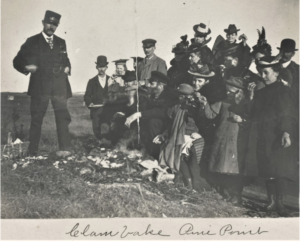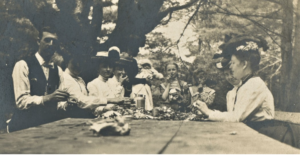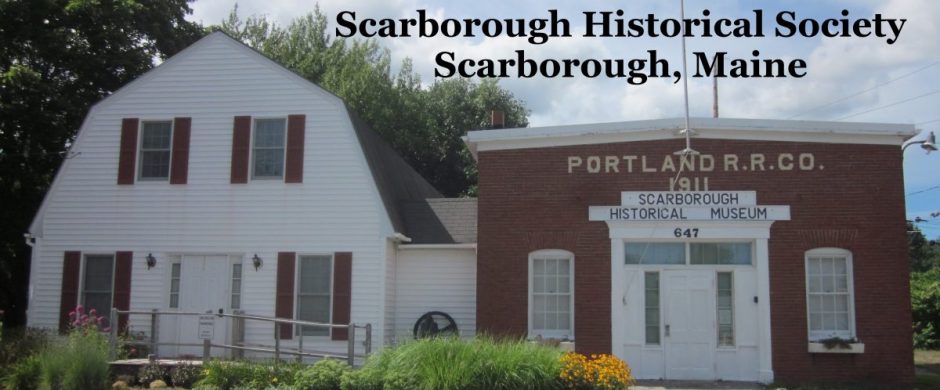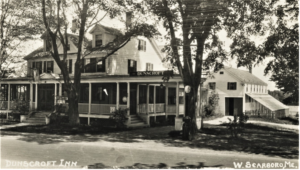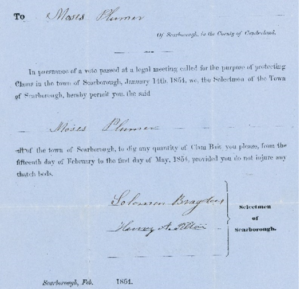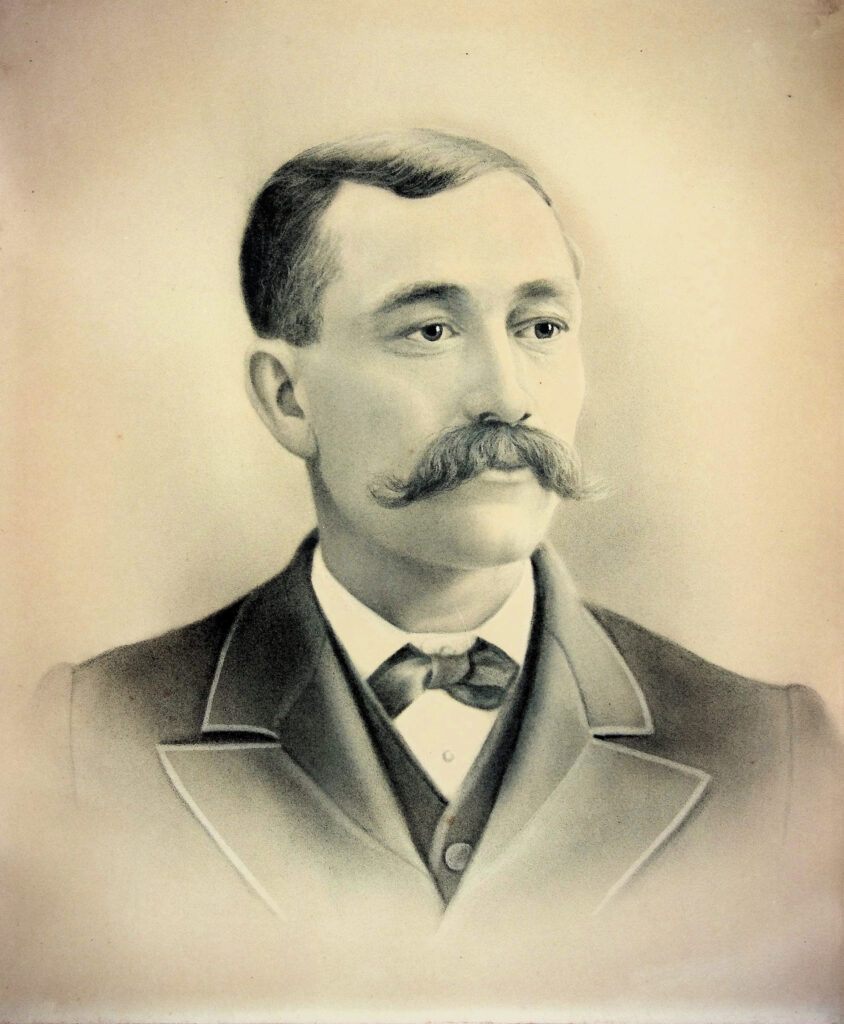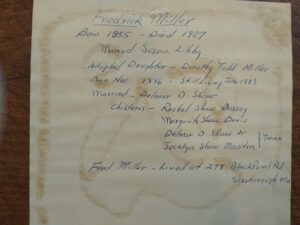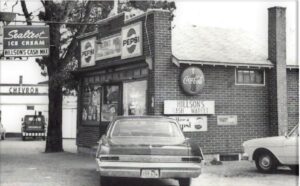By Don Taylor
Cleaning an ancestor’s marker, the marker of a veteran, or even the marker of a person you don’t know but see their monument is looking bad, can be a great source of accomplishment and pride. It is relatively simple and easy to do, but several do’s and don’ts exist.
First of all, do get permission to clean the marker. Even if it is a close relative, you should know who owns the cemetery and their rules for cleaning headstones and obtain authorization. Many of the cemeteries in Scarborough are owned and managed by the town. But many are privately owned. Always get permission before you start cleaning.
You don’t need bleach, a pressure washer, or metal brushes. Never, never, never use any of them on a marker.
The Easy Way
I like to do things the easy way; I clean a marker in five steps:
- Get permission.
- I check the weather report—no rain today or tomorrow – Good to go.
-
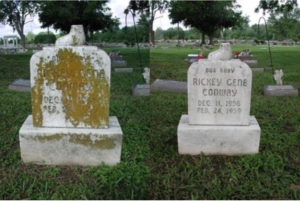
Before and after using D/2 Biological Solution
Photo courtesy Atlas Preservation
At the marker, I use a small pair of grass shears to trim the grass around the marker. I try to be careful to not touch the marker with the metal shears at any time. I trim just enough to make it clear that someone cares to make the marker look nice.
- Next, I use a water bottle and gently mist the marker with plain water. Rainwater is probably best. When I lived in Minnesota, where the water is very hard from lots of iron, I used bottled, filtered water. In any event, mist it down nicely.
- Finally, I spray down the stone with D/2 Biological Solution. It is a proven product that does the job and won’t harm the stone. The VA uses D/2 to clean over 3.5 million headstones each year. Several other products say they are like D/2, but I’ve never used them, so I can’t recommend them. I figure if the VA will use D/2 on my marker sometime in the distant future, it is good enough for me to use it now on someone else’s marker. Using a sprayer, I mist the stone down. (Note: I always wear a pair of dishwashing gloves when I clean a stone.)
That’s it. I go home. D/2 will work on the stone over the next week to a month and clean the biologicals from the stone.
When I return after a few weeks, I touch up the stone if needed, take a photo of the cleaned stone and note its GPS location (I have an app on my phone), and then update the memorial on Find-a-Grave.
The faster way
I know many folks like that immediate gratification of seeing their stone clean immediately, and I get it. The process is the same up to going home. Give the stone 5 to 10 minutes to have the D/2 work a bit. Then use a sponge or a very soft-bristle plastic brush. And gently scrub the stone. I will use a paint stir stick to work the moss off if there are large chunks of moss. Using a soft toothbrush to gently scrub the letters if they need extra cleaning is good. If the surface you are scrubbing gets dry, give it another squirt of the D/2, or water, to moisten it and continue. It doesn’t need to be drenched but should remain mist as you scrub. You are done. Take your photo and note the GPS location, and head home.
Throughout this process, take the time to be respectful. Be slow, be gentle. If it is an ancestor or a veteran, talk to them. Give them thanks for their contributions.
